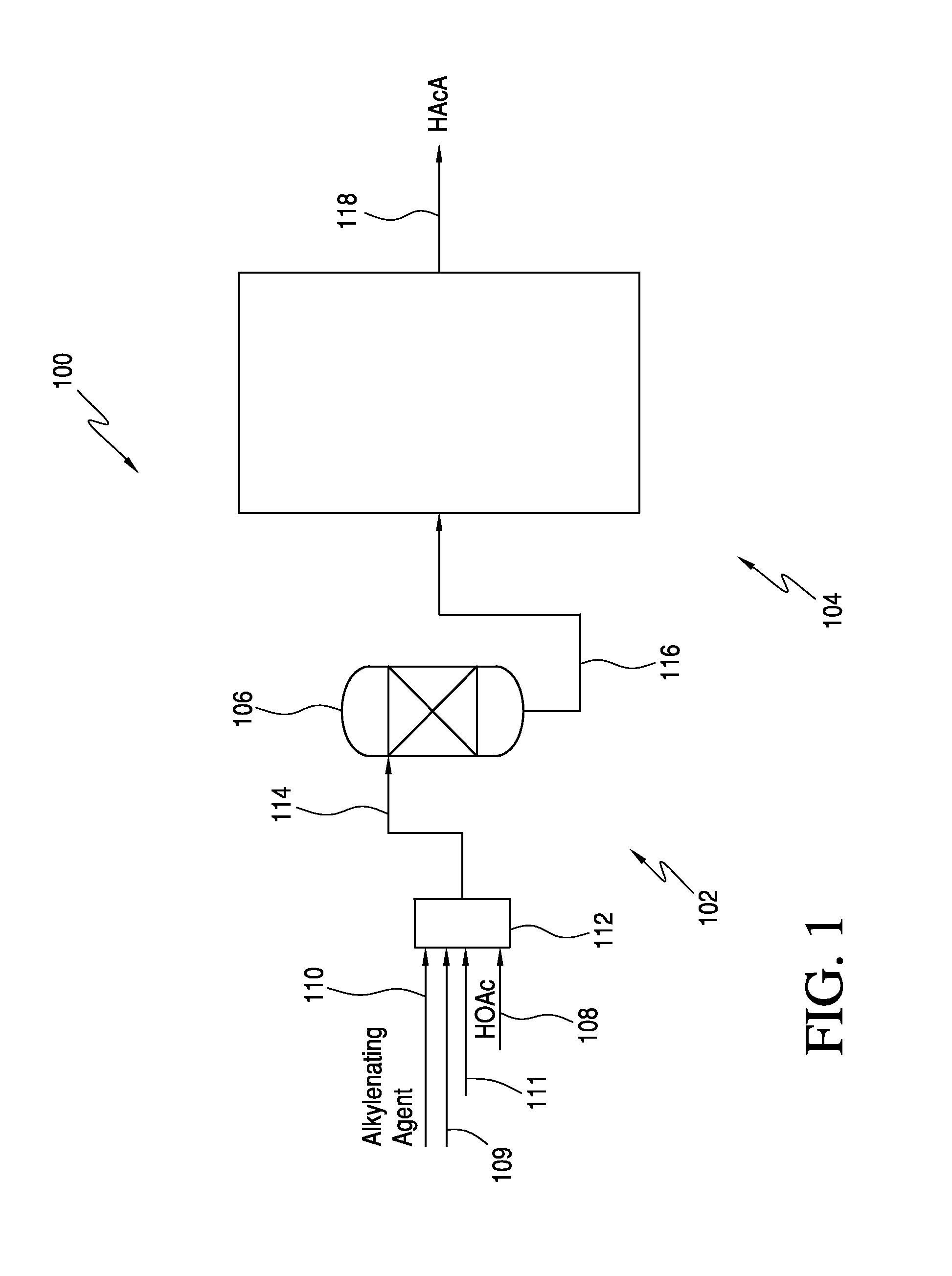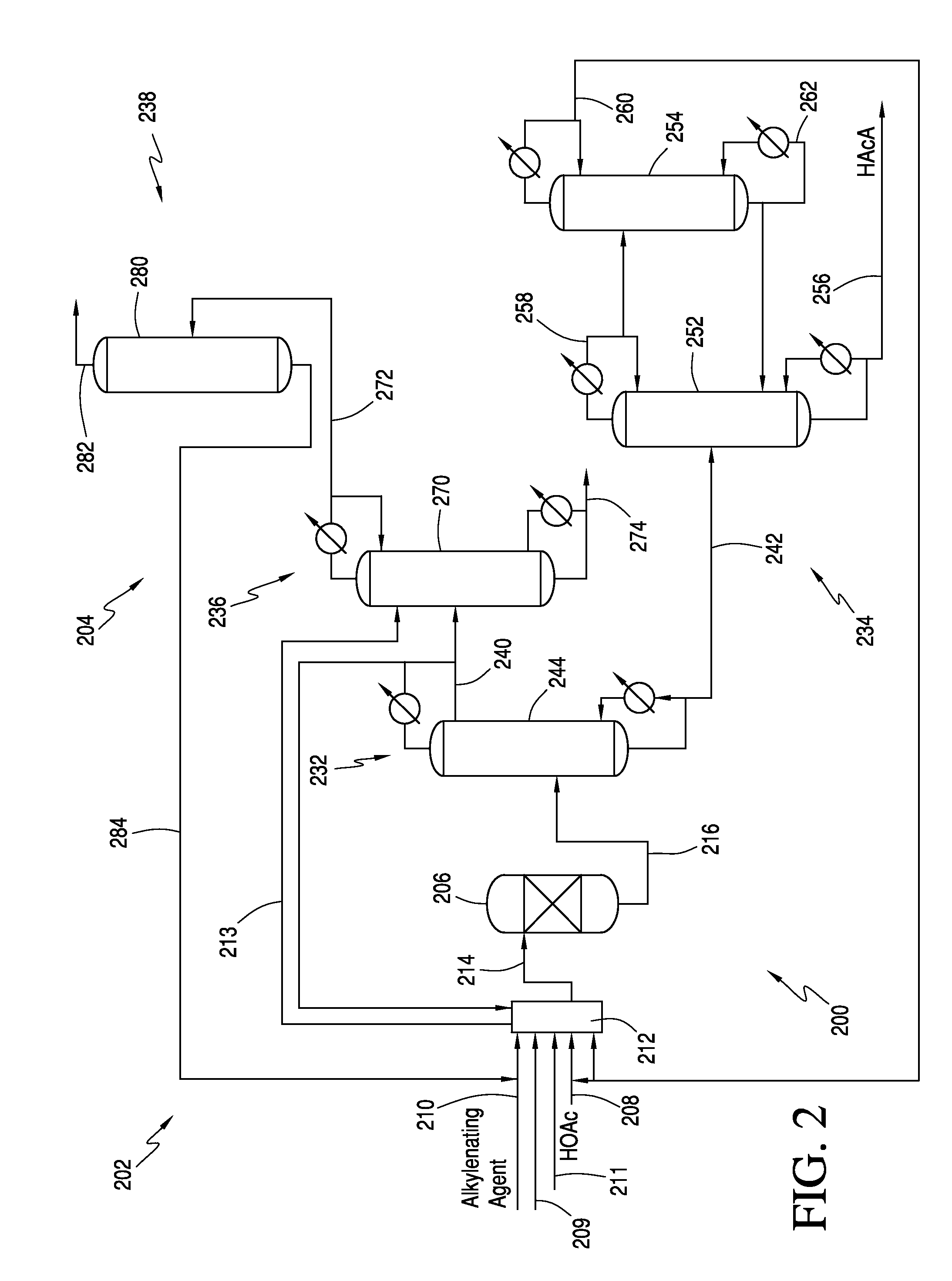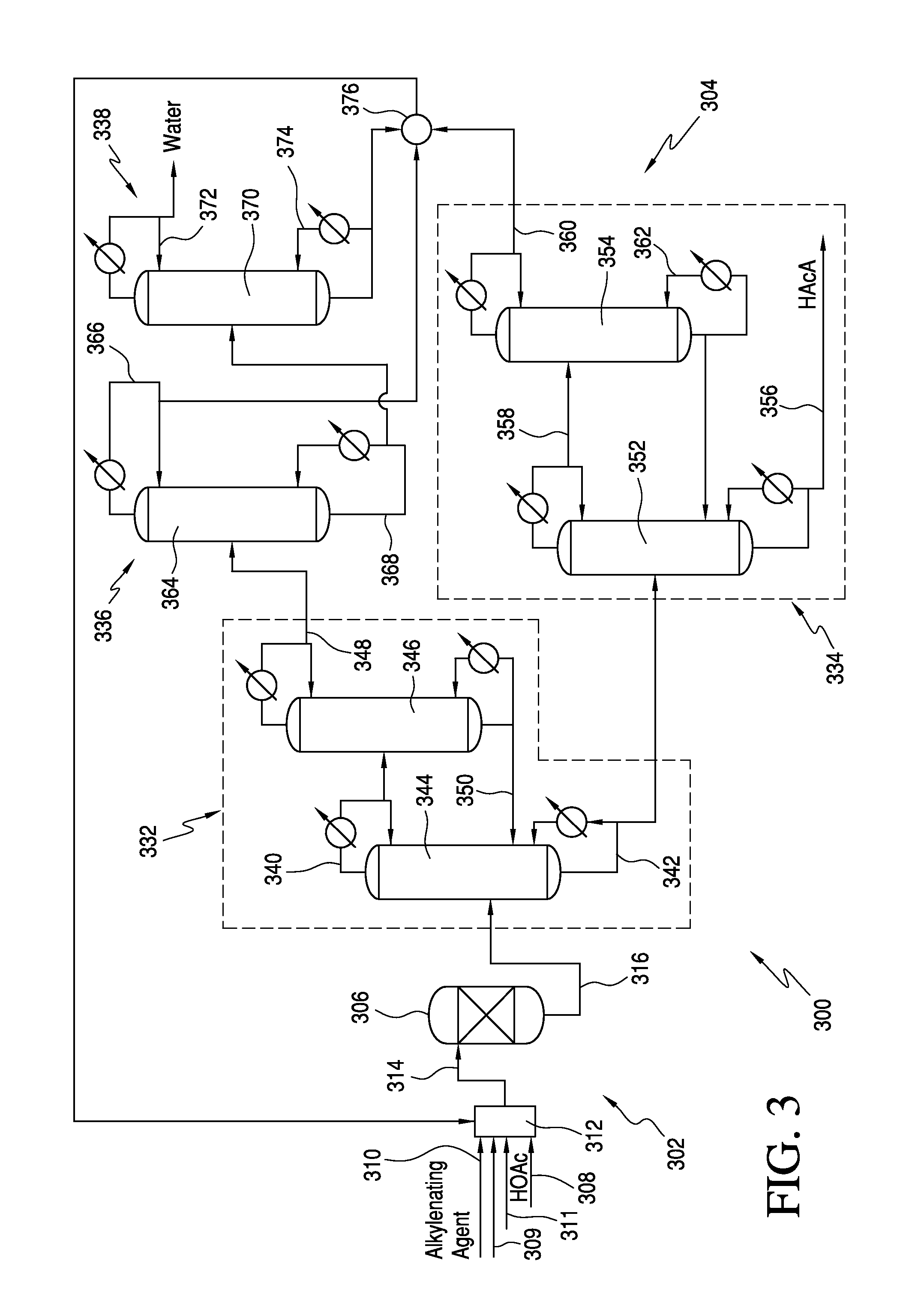Processes for producing acrylic acids and acrylates
a technology of acrylic acid and acrylate, which is applied in the preparation of carboxylic compounds, organic chemistry, chemistry apparatus and processes, etc., can solve the problems of process inefficiency, process production and/or separation inefficiency, explosion risk,
- Summary
- Abstract
- Description
- Claims
- Application Information
AI Technical Summary
Benefits of technology
Problems solved by technology
Method used
Image
Examples
example
Example 1
[0169]A reaction feed comprising acetic acid, formaldehyde, methanol, water, oxygen, and nitrogen was passed through a fixed bed reactor comprising a condensation catalyst. Three reaction conditions, which are displayed in Table 15, were employed.
[0170]
TABLE 15REACTION CONDITIONSComparativeFeedFeedFeedCompositionComposition 1,Composition 2,ComponentA, wt %wt %wt %Acetic Acid38.527.619.6Formaldehyde12.116.018.6Water20.326.824.5Nitrogen28.028.124.9Formaldehyde:Acetic0.631.161.9Acid molar ratio
[0171]Acrylic acid and methyl acrylate (collectively, “acrylate product”) were produced. The conversions, selectivities, and space time yields are shown in Table 16.
[0172]
TABLE 16RESULTSAceticAcrylate SpaceAcrylic AcidCarbonProcessAcidAcrylateTime Yield,Space TimeDioxideCondi-Conver-Productg / literYield, g / literProducttionsionSelectivityof catalyst / hrof catalyst / hrSelectivityA24.4488.77128.89127.543.98A25.4087.10128.48126.994.44A23.8885.24115.85114.774.23A23.4885.89119.70118.244.63A26.308...
PUM
| Property | Measurement | Unit |
|---|---|---|
| molar ratio | aaaaa | aaaaa |
| molar ratio | aaaaa | aaaaa |
| molar ratio | aaaaa | aaaaa |
Abstract
Description
Claims
Application Information
 Login to View More
Login to View More - R&D
- Intellectual Property
- Life Sciences
- Materials
- Tech Scout
- Unparalleled Data Quality
- Higher Quality Content
- 60% Fewer Hallucinations
Browse by: Latest US Patents, China's latest patents, Technical Efficacy Thesaurus, Application Domain, Technology Topic, Popular Technical Reports.
© 2025 PatSnap. All rights reserved.Legal|Privacy policy|Modern Slavery Act Transparency Statement|Sitemap|About US| Contact US: help@patsnap.com



